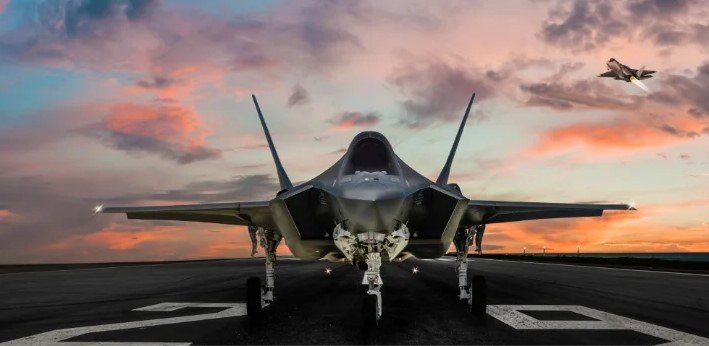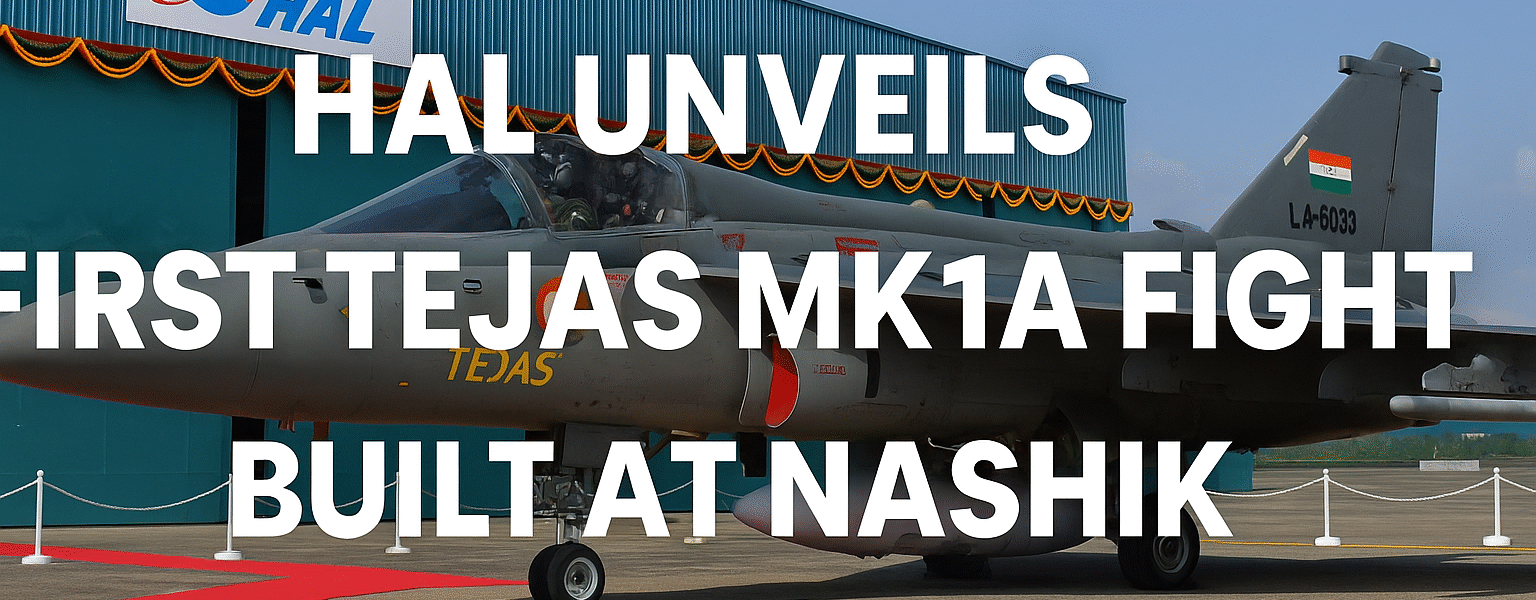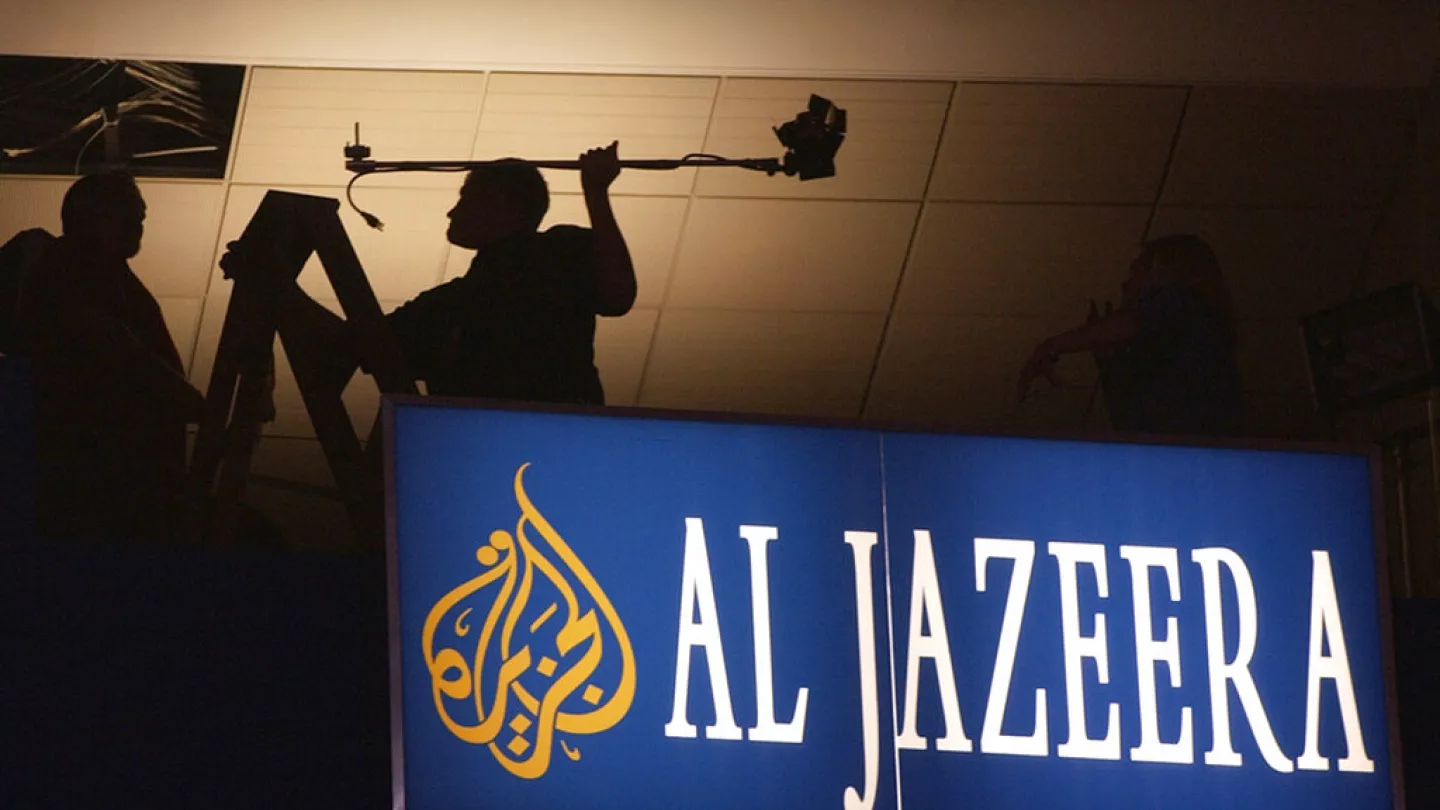HAL Unveils First Tejas Mk1A Fighter from Nashik: India’s Indigenous Jet Finally Takes Flight After Years of Delays
In a landmark moment for India’s aerospace ambitions, Defence Minister Rajnath Singh today unveiled the first Tejas Mk1A LCA (Light Combat Aircraft) fighter jet produced at HAL’s Nashik facility. The ceremony also marked the formal inauguration of HAL’s third Tejas production line and a second production line for the HTT-40 trainer aircraft, reinforcing the company’s efforts to scale up indigenous aircraft manufacturing.
Shortly after the unveiling, the Nashik-built Tejas Mk1A completed its maiden flight, receiving a water cannon salute — symbolising a major step forward for India’s goal of self-reliant defence production.
This event is not just symbolic. It concretises key shifts in India’s defence aviation strategy: geographic decentralisation of production, ramping up throughput, and accelerating the integration of advanced avionics and weapons in indigenous platforms.
What the Tajas Mk1A Variant Brings: Upgrades & Capabilities
The Tejas Mk1A variant is a significant evolution over the earlier Tejas Mk1. Some of its notable upgrades include:
- AESA radar & advanced EW suite — adding state-of-the-art detection, targeting, and electronic warfare capabilities.
- In-flight refuelling (air-to-air refuelling) — a capability missing in earlier versions.
- Improved maintainability and modular avionics — easing upgrade cycles and lowering lifecycle cost.
- Expanded weapons integration — beyond visual range (BVR) missiles like Astra, and options for varied payloads.
- Enhanced indigenous content and structural upgrades — increasing reliance on domestic supply chains.
In short, the Tejas Mk1A is designed to bridge the gap between lightweight fighters and more advanced multi-role platforms, giving the Indian Air Force (IAF) a more future-ready fleet.
Why Nashik Matters: A Strategic Move in Defence Manufacturing

1. Scaling production & decongestion
HAL already operates two Tejas production lines in Bengaluru. The Nashik facility adds critical capacity and geographic diversification.
HAL aims to produce 24 Mk1A jets per year by 2027, with Nashik contributing 8 jets annually.
This induction of a third assembly line is vital: delays and bottlenecks in Bengaluru have hampered previous delivery schedules. Nashik helps spread risk, ease logistical stress, and speed up throughput.
2. Legacy plant transformation
Historically, HAL’s Nashik division assembled Russian origin aircraft such as MiG and Su-family jets. The shift to indigenous LCA production is a symbolic turn from licensed manufacturing to home-grown design and production.
This transformation aligns with India’s broader “Atmanirbhar Bharat” push to minimise import dependence in strategic industries.
3. Strengthening supply chain & private sector tie-ups
The Tejas program increasingly relies on domestic suppliers. For example, VEM Technologies (Hyderabad) recently delivered the first centre fuselage for Mk1A to HAL.
HAL plans more such partnerships, especially for composite parts, avionics modules, and structural components, to support scale and resilience.
Hurdles & Delays: The Road Has Not Been Smooth
This milestone is being celebrated, but the road to it has been rocky, and several challenges still loom:
⚙️ Engine supply constraints
The supply of GE F404-IN20 engines has been a major constraint. HAL resorted to using interim Category-B variant engines for early airframe testing and initial flights.
The first F404-IN20 engines started arriving only in March 2025, after a multi-year delay.
HAL expects in 2025 to receive further deliveries (12 engines) and thereafter 20 per year to normalise production flow.
🛰 Avionics, radar & certification delays
While Mk1A integrates advanced avionics and AESA radar, certification of some indigenous systems lags. Reports suggest HAL may equip early production units with Israeli ELM-2052 radar suites until in-house “Uttam” systems clear certifications.
Missile integration (e.g. Astra) testing is scheduled soon after rollout.
📈 Timeline slippages & delivery pressure
The original delivery commitment was March 2024 for early units; that has shifted repeatedly.
Still, HAL targets 12 Mk1A deliveries in FY 2025–26. From Nashik, it will deliver 3–4 jets before March 2026.
To maintain momentum, supply chain, certification, and quality control must align. HAL leadership sees this as a test of project discipline.
Strategic Implications & Future Outlook
✈️ Strengthening the IAF fleet
The IAF faces depletion in older fighter squadrons (e.g. MiG-21 retirements). The Tejas Mk1A is central to bridging capability gaps until more advanced platforms (like AMCA) arrive.
With the new ₹62,370-crore (approx $7 billion) contract finalised recently for Mk1A aircraft, HAL’s responsibility and expectations are even higher.
🌐 Export and regional positioning
The Mk1A also positions India as a potential regional supplier of light combat aircraft. HAL and DRDO may export Tejas variants to friendly nations in South Asia, Southeast Asia, or Africa if performance and pricing align.
🧩 Next steps: Mk2, AMCA & scaling
While Mk1A is a stopgap and upgraded interim fighter, HAL is concurrently working on Tejas Mk2 and AMCA (Advanced Medium Combat Aircraft) programs for next-generation capabilities.
Success at Nashik will bolster confidence in scaling those programs and demonstrating that India can both prototype and produce advanced fighters domestically.
Conclusion
The unveiling and maiden flight of the Tejas Mk1A from HAL Nashik is a watershed in India’s defence manufacturing journey. It demonstrates commitment to “Make in India”, diversification of production, and strengthening indigenous capabilities.
But this is not the finish line: engine flows must stabilise, certification hurdles must be cleared, sustained output must meet targets, and quality must not slip. If HAL and its ecosystem deliver as planned, Nashik’s production line might well become the backbone of India’s light combat aircraft fleet—and a stepping stone toward self-sustained aerospace prowess.
Tejas Mk1A Nashik, HAL Tejas Mk1A fighter, HAL Nashik aircraft, Indian Air Force new fighter jet, HAL Tejas maiden flight, Tejas Mk1A specifications, Tejas Mk1A upgrades, India defence aviation news, Make in India fighter jet
Discover more from
Subscribe to get the latest posts sent to your email.








1 COMMENTS